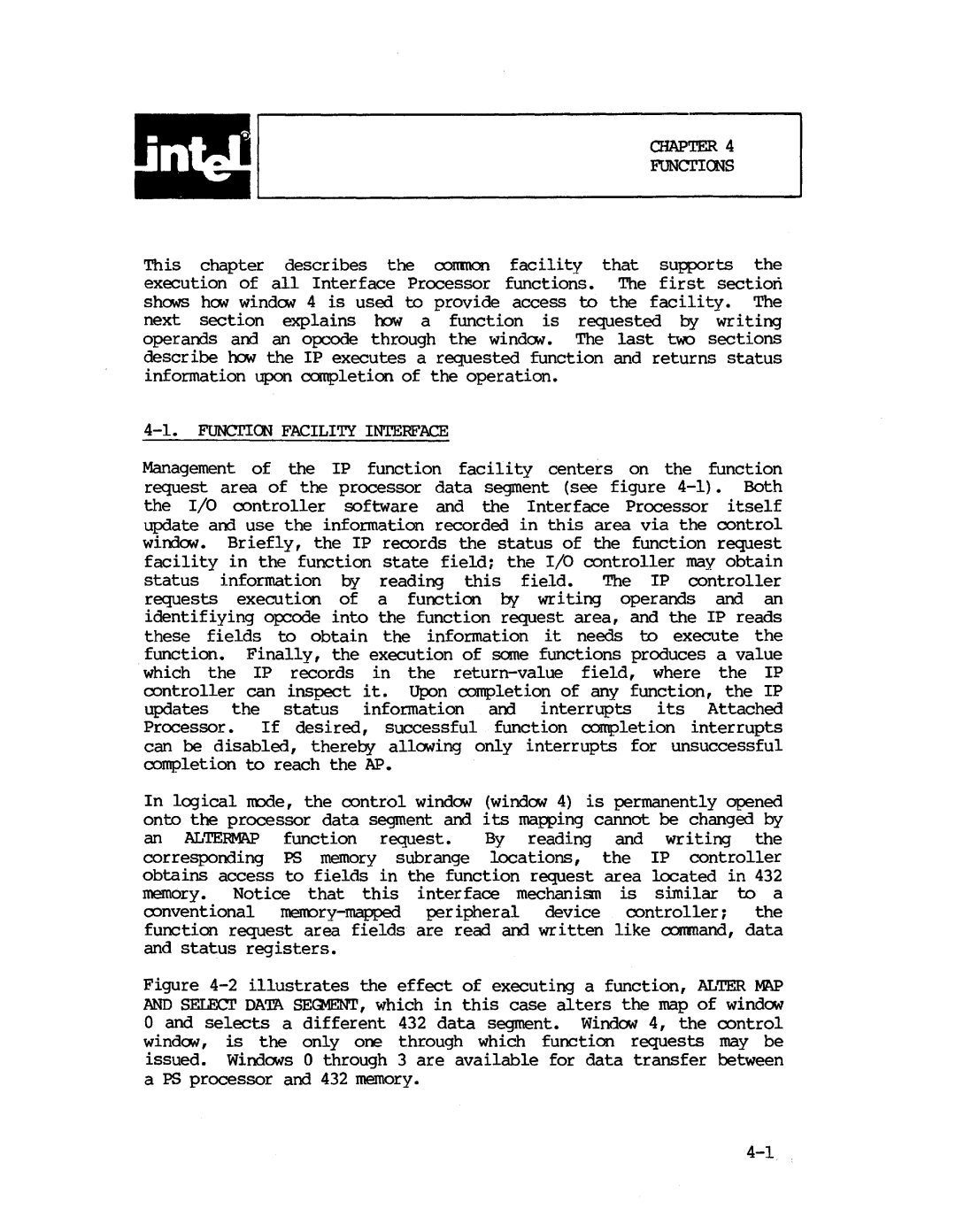
OiAPTER 4
FONcrIOOS
This chapter describes the common facility that supports the execution of all Interface Processor functions. The first section shows hCM windCM 4 is used to provide access to the facility. The next section explains how a function is requested by writing operands and an o~""Ode through the windCM. The last two sections describe how the IP executes a requested function and returns status infonmation upon campletion of the operation.
Management of the IP function facility centers on the function request area of the processor data segment (see figure
status information by reading this field. The IP controller requests execution of a function by writing operands and an identifiying opcode into the function request area, and the IP reads these fields to obtain the infonmation it needs to execute the function. Finally, the execution of same functions produces a value which the IP records in the
In logical mode, the control window (window 4) is permanently opened onto the processor data segment and its mapping cannot be changed by
an ALTERMAP function request. By reading and wr i ting the corresponding PS memory subrange locations, the IP controller obtains access to fields in the function request area located in 432 memory. Notice that this interface mechanism is similar to a conventional
